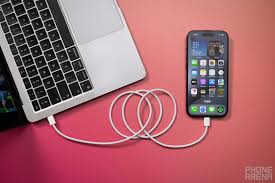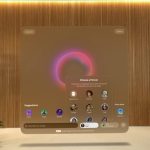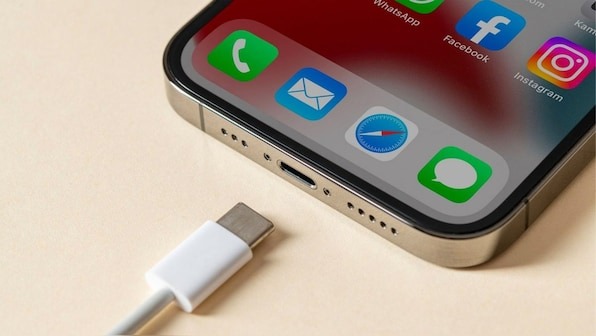The shift to USB-C technology has been a significant change for Apple, marking a departure from its proprietary Lightning port to embrace a universal standard. While this move has been widely praised for its convenience and compatibility, recent developments have raised questions about the security of Apple’s implementation. A self-proclaimed hacktivist has exposed vulnerabilities in Apple’s USB-C system, highlighting potential risks that could affect millions of users globally. This report explores the implications of this breach, the vulnerabilities it reveals, and what it means for Apple and its users.

USB-C, celebrated for its versatility, has become a standard across various devices, including smartphones, laptops, and accessories. Its adoption by Apple was not entirely voluntary but rather a response to regulatory requirements in regions like the European Union. The EU’s push for a universal charging standard aimed to reduce electronic waste and simplify charging options for consumers. Despite initial resistance, Apple integrated USB-C into its latest devices, including the iPhone 15 series and the newest iPads, signaling a major shift in its hardware ecosystem.
However, as with any transition to new technology, challenges have emerged. Apple’s implementation of USB-C includes a security feature designed to authenticate accessories and ensure compatibility with its devices. This authentication mechanism is intended to protect users from potential risks associated with uncertified or counterfeit accessories, such as poor performance, device damage, or even data breaches. Apple’s approach includes the use of custom chips within its cables and adapters to verify authenticity, a feature that distinguishes its USB-C implementation from the broader industry standard.
The security breach reported by the hacktivist sheds light on the potential weaknesses of this system. According to reports, the individual managed to bypass Apple’s authentication protocols, effectively compromising the integrity of its USB-C security. This exploit demonstrates that, despite Apple’s efforts to create a secure environment, vulnerabilities remain. The hacktivist’s findings have sparked a broader conversation about the balance between security, user convenience, and proprietary control in technology.
One of the primary concerns raised by this breach is the potential for malicious actors to exploit the same vulnerabilities. By bypassing Apple’s authentication, counterfeit accessories could mimic genuine products, posing risks to both hardware and user data. These risks include the possibility of unauthorized access to sensitive information, malware installation, or even physical damage to devices caused by substandard components. The breach also highlights the broader issue of supply chain security and the challenges of ensuring the integrity of hardware and software systems.
The hacktivist’s actions have drawn attention to the complexities of USB-C security. While Apple’s proprietary approach aims to create a controlled environment, it also raises questions about transparency and user autonomy. Critics argue that proprietary security measures can limit consumer choice, forcing users to rely on Apple-certified accessories that often come at a premium cost. This dynamic creates a tension between security and openness, a debate that extends beyond Apple to the tech industry as a whole.
To understand the implications of this breach, it is essential to examine the technical aspects of Apple’s USB-C implementation. The authentication system relies on a combination of hardware and software, including custom chips embedded in cables and adapters. These chips communicate with Apple devices to verify authenticity, ensuring that accessories meet the company’s performance and safety standards. The hacktivist’s ability to bypass this system suggests a flaw in the design or implementation of these protocols.
The breach also raises broader questions about the security of USB-C as a standard. While Apple’s implementation includes unique features, the USB-C ecosystem as a whole faces similar challenges. The universal nature of USB-C makes it susceptible to a wide range of attacks, from data theft to device tampering. As the technology becomes more prevalent, ensuring its security will require coordinated efforts from manufacturers, regulators, and the broader tech community.
In response to the breach, Apple has not yet issued a public statement detailing its plans to address the vulnerability. However, the company is likely to take swift action, given its commitment to user security and its reputation as a leader in tech innovation. Potential measures could include software updates to enhance authentication protocols, increased scrutiny of third-party accessories, or even hardware revisions in future USB-C devices. Apple’s ability to respond effectively will be crucial in maintaining user trust and mitigating the risks associated with this breach.
The implications of this breach extend beyond Apple to the broader tech industry. As USB-C continues to gain traction as a universal standard, other manufacturers may face similar challenges in ensuring the security of their implementations. The breach serves as a reminder of the importance of rigorous testing and validation in the development of hardware and software systems. It also underscores the need for transparency and collaboration in addressing security vulnerabilities, particularly in a landscape where technology plays an increasingly central role in daily life.
For users, the breach highlights the importance of vigilance and informed decision-making. To minimize risks, users are advised to purchase accessories from reputable sources and prioritize certified products that meet established safety and performance standards. Awareness of potential vulnerabilities can also help users make informed choices about how they use their devices, from managing data transfers to securing personal information.
The following table provides a comparison of the key features and security aspects of Apple’s USB-C implementation versus the broader industry standard:
| Feature | Apple USB-C Implementation | Standard USB-C |
|---|---|---|
| Authentication Protocol | Proprietary | None or Manufacturer-Defined |
| Security Chips in Cables | Yes | Optional |
| Compatibility | Limited to Certified Devices | Universal |
| Vulnerability to Hacks | Yes (as reported) | Varies by Manufacturer |
This comparison highlights the trade-offs between Apple’s proprietary approach and the more open nature of the standard USB-C ecosystem. While Apple’s system aims to enhance security, the reported breach demonstrates the challenges of achieving foolproof protection.
The breach of Apple’s USB-C security is a significant development with far-reaching implications. It underscores the complexities of implementing secure systems in a rapidly evolving technological landscape and highlights the ongoing challenges faced by manufacturers and users alike. As Apple works to address this vulnerability, the incident serves as a reminder of the importance of transparency, collaboration, and vigilance in ensuring the security and integrity of modern technology. For users, staying informed and taking proactive steps to protect their devices will be essential in navigating the risks associated with this breach and the broader tech ecosystem.










Add Comment